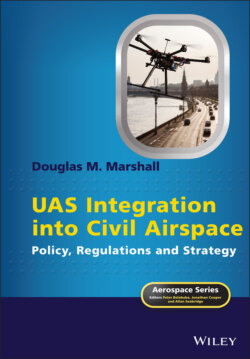Читать книгу UAS Integration into Civil Airspace - Douglas M. Marshall - Страница 12
The Law of the Sea and the Law of the Air
ОглавлениеPerhaps the greatest challenge to lawmakers and regulators charged with maintaining an acceptable level of safety in their respective national airspace systems is how to integrate unmanned aircraft into existing aeronautical environments where manned aircraft have been navigating with ever increasing levels of safety for decades. The law of the sea evolved over centuries of commercial shipping activities, and is one of the oldest branches of public international law (Tanaka 2012). The law of the airways has a relatively shorter life, but it has progressed and expanded at a far greater pace than the law of the sea. What makes the laws of the sea and the air similar enough to warrant comparison, and perhaps guidance for aviation professionals and regulators, is that both bodies of law, policy, and regulation deal with access to and the safety of a vast common community resource, to wit: the oceans and the airspace above the Earth and the high seas. While it seems unlikely that two vessels navigating the vastness of the world’s oceans could ever collide, they do, far more often than may commonly be known. The European Maritime Safety Agency Annual Overview of Marine Casualties and Incidents 2018 reported an average of 3315 occurrences per year for the four years ending in 2017. In 2017 more than 1500 cargo ships were involved in accidents that resulted in 25 fatalities. Casualties numbered 1018 persons, half related to issues of a navigational nature, such as contacts, grounding/stranding, and collisions. The same observation could be made about the skies. The skies are immense, seemingly limitless, yet airplanes collide, often with catastrophic results. Thus, in both realms, the sea and the sky, regulations and “rules of the road” are necessary to minimize the risk of such events. The aviation rules for airplanes occupying the same airspace in close proximity to one another generally follow the rules at sea (for example, “… when aircraft of the same category are converging at approximately the same altitude [except head-on, or nearly so], the aircraft to the other’s right has the right-of-way”; similarly, “… when two power-driven vessels are meeting on reciprocal or nearly reciprocal courses so as to involve risk of collision each shall alter her course to starboard so that each shall pass on the port side of the other”).
